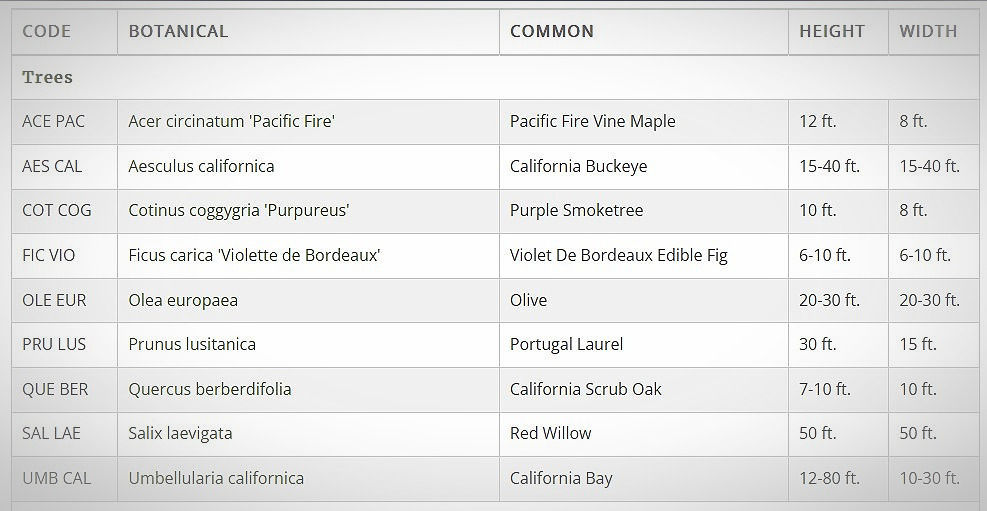
123-456-7890
Q & A

Q: I would like to refresh my planting beds, but with what in-fill plants?
A: With our horticultural coaching service, we'll help you fill in the blanks with green.
Maybe this happens to you: you go to the garden center. You buy a cart full of colorful annuals, plant them and in a month they're dead. So you go back and try again. And again.
We know what works. Or if your garden is struggling, we can find out why. Together we can figure out your site and the shrubs, perennials and trees that will thrive there.
We know the dwarf cultivars that will work in tight places. We know the "bridge" plants that will connect, in a coherent way, to traditional garden standards - the boxwoods, the camellias - with tougher species with a modern, low-water, low-maintenance sensibility.

Q: What is a Plant Palette?
A: An edited plant list that suits your site and style.
Need something for a dry, shady spot?
Want a cottage garden style but not a big water bill?
Autumn color?
Makescapes subscribes to a database that filters for all these characteristics and more. We'll then create an online presentation of plant images, annual bloom times and water requirements.
Dog friendly? Deer proof?
Plants that thrive on neglect?
Makescapes will find those plants that will thrive in your garden.


A: There are so many beautiful alternatives.
Go with groundcovers - native bunch grass, sedges or no-mow grass for a green shag rug effect. These plants root deeper than turf but require less water and upkeep.
Or shift from the same-old, same-old lawn to a hard-working patio. Even in the front yard. Surround a seating area with a border of non-thirsty shrubs and invite the neighbors to your side of the hedge for a lemonade to celebrate.
If you wish to keep an area of lawn for kids' play or lounging, reduce its size then stock up on flowering shrubs and small trees for dappled shade.

A front porch that Would appreciate some attention
Q: Boost curb appeal? But we're not selling the house.
A: If you do it for the benefit of your family now, they'll appreciate it every time they come home.
When the time comes to sell, curb appeal will increase your home’s resale value, but why not do it now for everyday living value?
It can be as simple as removing a leggy shrub, adding in-fill greenery and topping with a layer of decorative mulch. Or paired terracotta pots filled with evergreen plants and a mix of succulents. Voila! A forgotten stoop is a fresh one.
With Makescape’s garden coaching service, this transformation can be a day’s work. We can create a cohesive look from sidewalk to front door.
And it will please your neighbors, and maybe even inspire them.
Q: How can we make our garden an extension of our home?
A: Like a house, a well-designed garden has a floor plan.
A visitor opens the garden gate in anticipation, then follows the path seeking the garden’s rewards, maybe a dogwood in bloom, a splashing fountain, or a courtyard under a wisteria-covered arbor.
Designers consider the organization of space to create a pleasurable experience for the visitor. The shrubbery create the walls, and a tree's canopy is the garden's ceiling. These spaces are designed using principles of scale, balance, rhythm and repetition.
Makescapes creates master plans with a base geometry that is curved, square or mix of both. We consider materials for hardscape -- wood, stone, metal, concrete or tile -- and greenscape, plant matter and soil is a material, too. All come together to make a landscape livable.


Q: What exactly is a Planting Plan?
A: A graphical representation of the plant palette overlaid on your site.
The planting plan shows where to install each species, shown as circles of different sizes. The circles may be colored or contain a species name abbreviated in code.
Plans may indicate how many of each species to buy and in what size: 1-gallon, 5-gallon, 15-gallon, etc.
They often come with specifications (aka specs) telling your contractor the depth and width of the hole, how to stake trees properly, water new plants and how many inches of mulch to finish the job.
It's a technical document reflecting a designer's strategic thought on where your new plants will thrive.